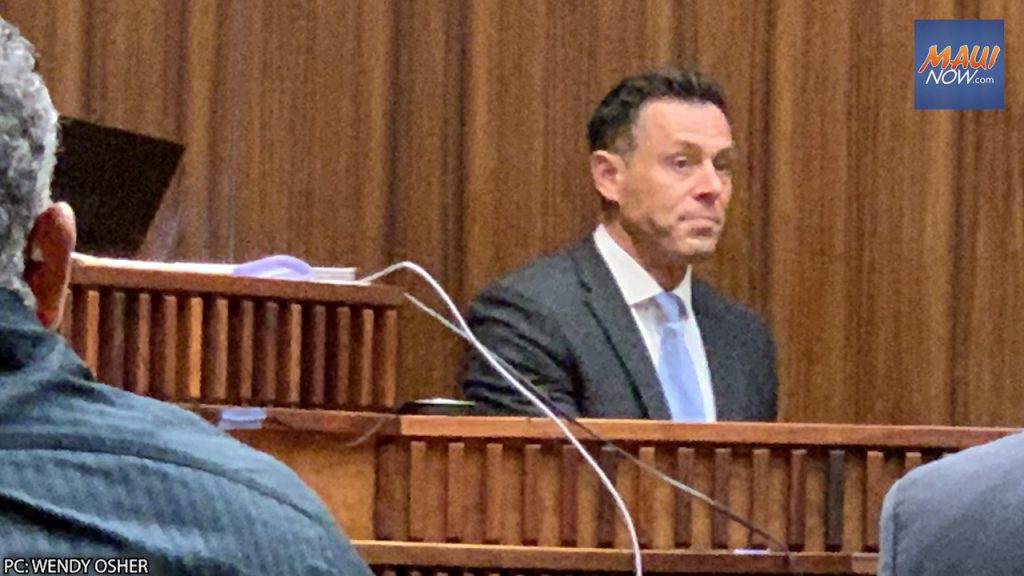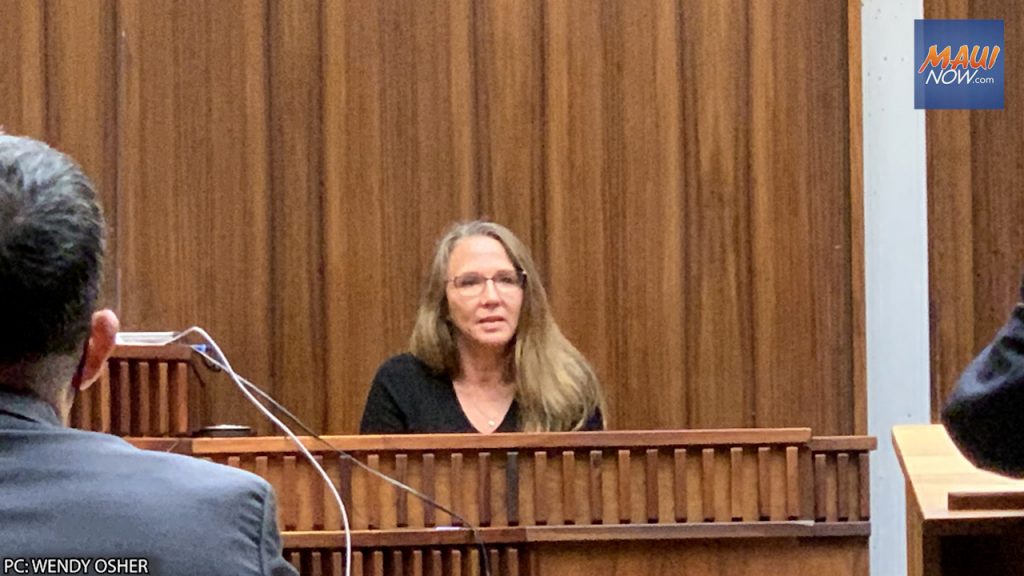Maui murder trial concludes with FBI testimony, motion for acquittal denied

Testimony has concluded in the trial of Bernard Brown, who is accused of second degree murder in the disappearance and presumed death of Moreira “Mo” Monsalve more than eight years ago. Monsalve was his ex-girlfriend at the time.
The 46-year-old mother of three was last seen on the evening of Sunday, Jan. 12, 2014, at Brown’s ʻĪao Parkside residence. Brown has pleaded not guilty to the charges, and on Monday declined the opportunity to testify on his own behalf.

FBI agent offers insight into cell usage
A special agent with the FBI, Michael “Mike” Easter, and a friend of Monsalve, Lisa Thompson, were the final individuals to testify.
Easter, who is a member of the FBI’s Cellular Analysis Survey Team, was tasked with reviewing cell records for both Monsalve and Brown, and determining the general area of their phones on Jan. 12-13, 2014.
He said the cell tower indicates a direction of coverage, and is consistent with an individual being at or near a certain area. While he was able to gather information for incoming and outgoing calls that were received, technology back in 2014 did not show cell site information for text messages or received calls that went to voice message.
Easter presented T-Mobile records for both individuals and prepared illustrations depicting the direction of the cell tower sectors used, and the likely location of the individual initiating the calls.
For Monsalve’s cell phone activity, Easter said outgoing calls were made from Monsalve’s phone on Jan. 12, 2014 at 9:42 a.m. in the area of Brown’s residence on Piwai Lane. Another call was made at 10:19 a.m. from an area near the University of Hawaiʻi Maui College in Kahului.
Additional calls were initiated at 1:22 a.m. and 11:47 a.m. from the area of Schaefer Corp., where Monslave was employed in Kīhei. At 12:33 p.m., Easter testified that Monsalve’s phone was believed to be in the general area of Kīhei, and by 12:39 p.m., the device was transitioning back to the area of UHMC. During that time frame, there was one outgoing call to Brown’s number.
At 4:26 p.m. and 4:30 p.m., there were two cell site activations from the area of Hang Loose Lounge in Kahului. Monsalve’s daughter Alexis Felicilda had testified earlier that she had gone there with her mother before being dropped off at the airport.
An outgoing call at 7:16 p.m. showed Monsalve in the area of Brown’s residence, and a final call at 12:07 a.m. on Jan. 13, 2014, was placed to Brown, according to Easter. It’s the last cell site registration by Monsalve’s phone, according to Easter’s testimony. He said the lack of cell registration meant the phone was “off, in airplane mode, or outside of network coverage.”
When assessing Brown’s cell usage, Easter said cell usage between 10:19 a.m. on Jan. 12, and 8:45 a.m. on Jan. 13, was primarily using one tower, but two sectors, which have an area of common coverage. Data between 9:01 a.m. and 4:59 p.m. on Jan. 13, shows that Brown was either stationary at his residence or moving within the same general area of his residence and Valley Isle Car Service, according to Easter.
During earlier testimony, a witness said that Brown dropped off Monsalve’s car at the shop, located in the Wailuku Industrial area. The witness said Brown made a phone call during the ride back.
According to Easter, multiple outgoing cell phone calls were made from Brown’s phone to Monsalve’s phone after her device was no longer registering with cell sites. The initial series of calls were at: 12:22 p.m. 1:12 p.m. 3:11 p.m. 3:58 p.m. and 3:59 p.m. on Jan. 13, 2014. Two more outgoing calls were attempted to Monsalve’s number at 6:54 p.m. and 7:41 p.m. on the same day. Easter said all would have been routed to her voice mail, and did not register her phone location.
The next succession of calls occurred at 8:10 p.m., when two calls were made. Both calls were consistent with Brown either being at his residence or in the area of Valley Isle Car Service, according to Easter. And a final series of calls were made to Monsalve’s number at: 8:14 p.m., 10:13 p.m., and two calls at 11:03 p.m. on Jan. 13.
The FBI also found evidence of SMS text messaging, with the last outgoing message from Monsalve’s phone to Brown’s phone sent at 2:46 a.m. on Jan. 13, 2014. Easter noted that there was no cell site data for voice mail or text message activity.
When asked by the defense if data would have shown cell site activity for app, browser and internet use, Easter said, ‘No.’
During questioning, he noted that if a long distance was traveled during a phone call, phone records only show the originating and terminating points.

Friend/Co-worker of Monsalve testifies
Monsalve’s friend and co-worker Lisa Thompson said she knew that Brown and Monsalve had an argument on Dec. 31, 2013. “There was an altercation that I knew was going on, but I wasn’t directly involvded. She was upset especially afterwards,” said Thompson, noting that Monsalve was “worried” about what was going to happen.
Thompson confirmed that Monsalve had been housesitting for a fellow co-worker for a short time, and plans were made to stay with Thompson right after. “We had been talking, and she was going to come stay with me, and she was also looking for an apartment,” Thompson said, noting that her search was promising.
“We had been talking about our kids graduating at the same time. We were both going to be empty nesters and we were fantasizing about doing an empty nest cruise,” said Thompson.
When Monsalve didn’t show up to work or call, Thompson said there was a lot of concern. She started making phone calls to find out where Monsalve had gone, but received no response. At one point, she said she called Brown from the police station where she had gone to file a missing person report.
Defense motion for acquittal is denied
Brown’s attorney, Randall Hironaka, made an oral Motion for Judgment of Acquittal, but it was denied by Judge Peter Cahill.
Hironaka argued that there was “no direct evidence” for charges that Monsalve is dead, saying “the most compelling evidence doesn’t come from any witnesses,” but from her phone. He also argued that there’s “no evidence” that Brown was using Monsalve’s phone. “There’s just a lot of doubt,” said Hironaka.
The state argued that there was sufficient evidence from witnesses who established that there was no indication that Monsalve would commit suicide or ever wander off. The prosecution concluded that her being killed was “really the only other explanation.” Prosecutors also said Brown was the last one to see her alive, and that “phone searches and statements the defendant made and his behavior” are basis enough for the case to go to the jury.
After 35 witnesses and eight days of testimony since Aug. 1, closing statements from the state and defense are expected on Wednesday, Aug. 24, 2022.









